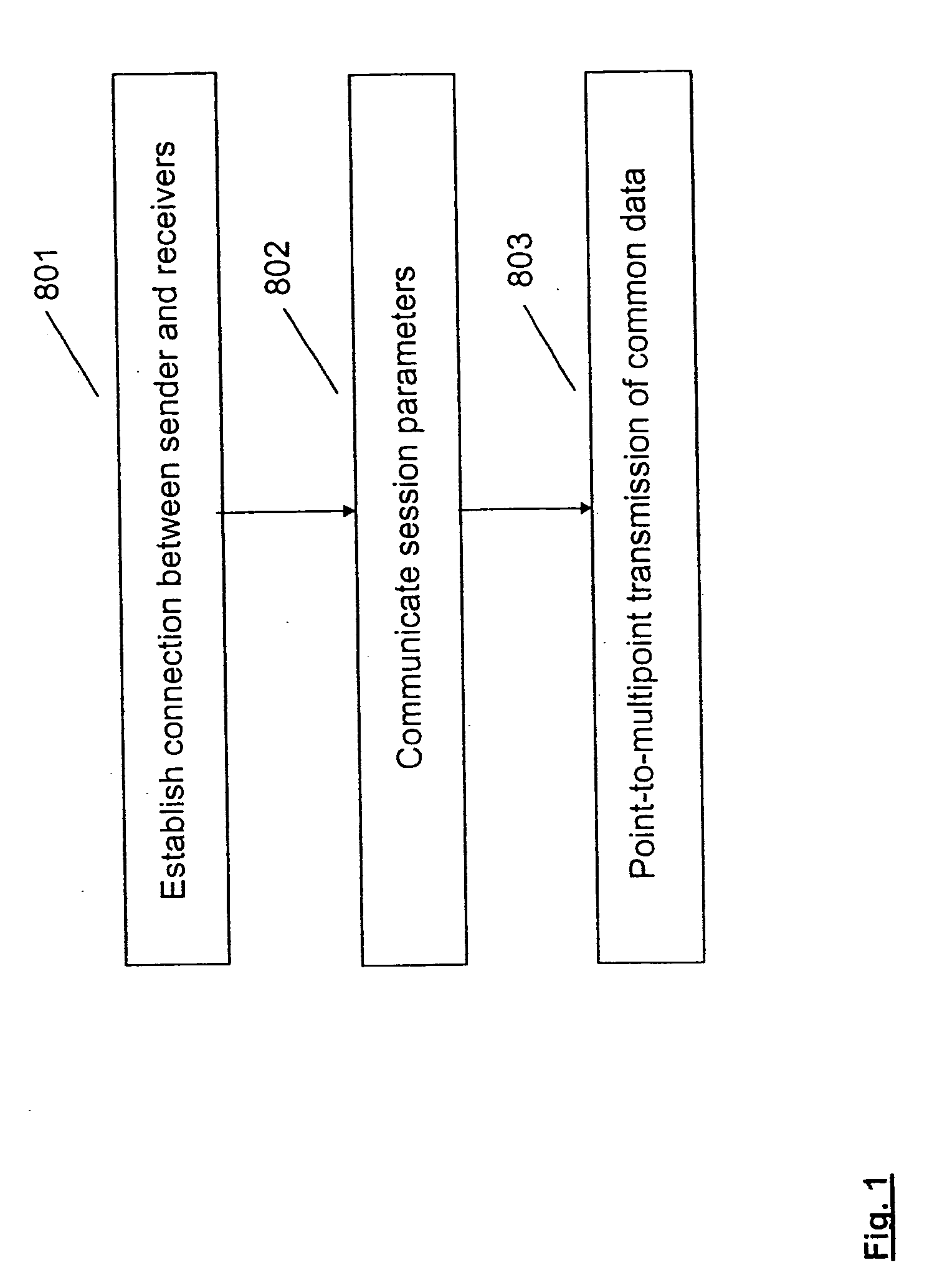Conveying parameters for broadcast/multicast sessions via a communication protocol
a communication protocol and parameter transmission technology, applied in the direction of data switching networks, broadcast service distribution, instruments, etc., can solve the problems of not being able to provide mobile receivers, not being able to make available to mobile receivers, and being unable to achieve the control of quality of servi
- Summary
- Abstract
- Description
- Claims
- Application Information
AI Technical Summary
Benefits of technology
Problems solved by technology
Method used
Image
Examples
example 1
[0202] a=repair-token: {ptm, (“http: / / www.file.com / file3.3gp”, (10, 20), (12, 134))}
[0203] In this example, the repair is done via point-to-multipoin for the file indicated. The blocks that are going to be repaired are those with SBN 10 and ESI 20, and SBN 12 and ESI 134.
example 2
[0204] a=repair-token: {ptm, (“http: / / www.file.com / file3.3 gp”, (10-14), (16,34))}
[0205] In this example, the repair is done via point-to-multipoint for the file indicated. The blocks that are going to be repaired are those for SBNs 10 to 14 and ESI 34 of SBN 16.
example 3
[0206] a=repair-token: {ptm, (“http: / / www.file.com / file3.3gpp”, “first_byte_position=10,number_of_bytes=150”)}
[0207] In this example, the repair is done via point-to-multipoint for the file indicated. The number of bytes to be repaired are 150, starting from byte 10.
6. Multiple Channels
[0208] The definition of SDP attributes related to multiple channels includes three aspects as will be described below.
6.1 First Aspect
[0209] The multiple channel attribute describes the number of channels used by the sender to transmit. It may also be used to check the number of channels against the SDP m-lines.
[0210] An example syntax according to the present invention is given below as: [0211] a=flute-ch: value CRLF [0212] wherein [0213] value=% d
[0214] Therein, value is the number of channels used by the sender to transmit data in a FLUTE session. This parameter may indicate to the receivers that the sender is using multiple channels in the FLUTE session to transmit data. This may also ind...
PUM
 Login to View More
Login to View More Abstract
Description
Claims
Application Information
 Login to View More
Login to View More - R&D
- Intellectual Property
- Life Sciences
- Materials
- Tech Scout
- Unparalleled Data Quality
- Higher Quality Content
- 60% Fewer Hallucinations
Browse by: Latest US Patents, China's latest patents, Technical Efficacy Thesaurus, Application Domain, Technology Topic, Popular Technical Reports.
© 2025 PatSnap. All rights reserved.Legal|Privacy policy|Modern Slavery Act Transparency Statement|Sitemap|About US| Contact US: help@patsnap.com



